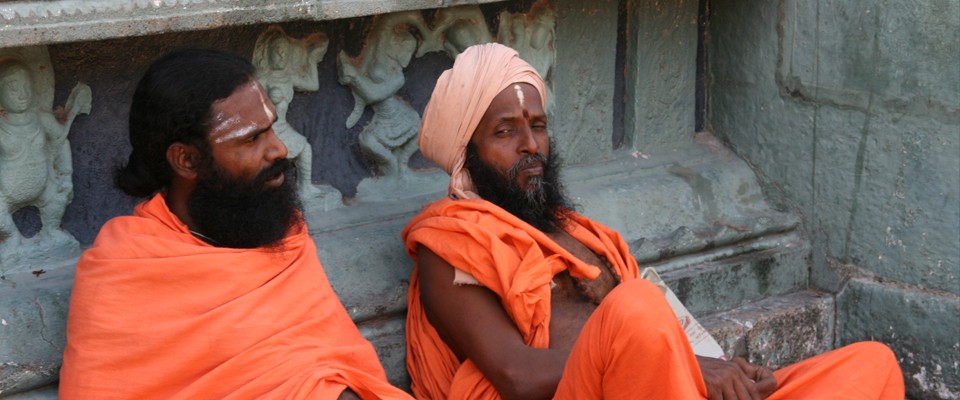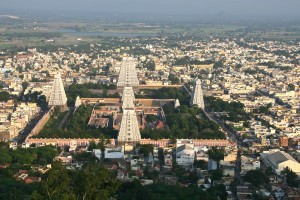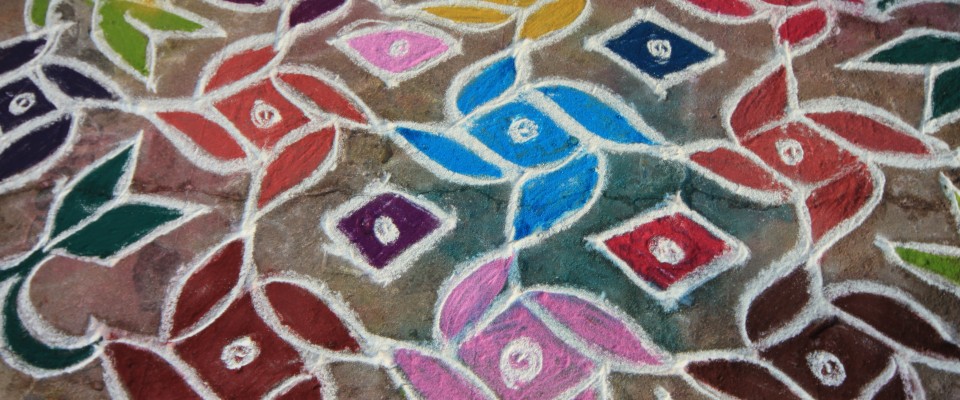Renowned pilgrimage destination, the city is famous for its great temple of Annamalaiyar dating back to the IXth century AD and devoted to Shiva. The city is also well known for the legendary sacred hill of Arunachala, which is a holy place, as well as for the presence of the ashram of Sri Ramana Maharshi, considered as one of the most illustrious wise men and Indian mystics of the XXth century.
- The temple is one of the largest in India with a surface area of 10 hectares. It is surrounded by a wall, ornamented by four colossal towers (known as Gopuram) used as the entrance of the sanctuary, and decorated by thousands of sculptures painted rich in colours. The Gopuram have a distinctive architecture dating back to the Chola period in the IXth century. The Eastern Gopura is one of the largest in India; it is 66 meters tall. The room of a thousand pillars is magnificent. The temple is full of life, six rituals are held daily from 5h30 to 10h, there are twelve yearly festivals of which the most famous is the Karthikai Deepam held on the day of full moon between the months of November and December. More than three million pilgrims are present during the celebration. At the top of the hill of Arunachala, there is a giant fire, visible over several kilometres, held in the honour of Shiva.
- The sacred hill of Arunachala, also called Arunagiri, Annamalai Hill, is one of the five holy shivaït places of South India. Some believe Shiva manifested himself there as a pillar of light. Many Saints and wise men have established themselves on the hill or in the caves, such as Sri Ramana Maharshi who lived there from 1899 to 1916.
“Arunachala is really a holy place. Of all holy places, Arunachala is the holiest. It is the Heart of the world. It is Shiva itself. It is the secret and holy heart of Shiva. In this place, it resides forever under the form of the glorious Arunachala Mount.” Extract from: Sri Arunachala Mahatmyam – Skanda Purana.
At the foot of the sacred hill of Arunachala lies the Ashram of Sri Ramana Maharshi. Ramana Maharshi is one of the greatest wise men and spiritual masters of modern India. He was born on December 1879 and died on April the 14th 1950. He came to transmit the ancient Wisdom of the Advaita-Vedanta under a new, simpler and clearer form. It is based on his personal experience, and he has made accessible to today’s men, the finding of the path of knowledge (Jnana-Marga). According to his teaching, only the Self, the pure conscience, has to be found thanks to the continual question: “Who am I?” “You are That at this precise moment.”
“In the centre of the heart’s cave, in the shape of Me, in the shape of Self, unique and solitary, straight from self to self, the Brahman shines! Enter yourself inside, your thought piercing up to the source, your spirit buried in itself, blow and feel within the collected depths, all of yourself fixed in you and there simply just be!”
Sri Ramana Maharshi
Tiruvannamalai is located 163 km from Mahabalipuram, 3 hours by car, approximately 5 hours by bus (first go to Chengalpath then change bus to Tiruvannamalai).


